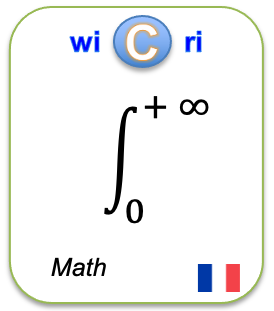Institutional and Intellectual Contexts in German Mathematics, 1800–1870
Identifieur interne : 000A00 ( Main/Merge ); précédent : 000999; suivant : 000A01Institutional and Intellectual Contexts in German Mathematics, 1800–1870
Auteurs : José Ferreir S [Espagne]Source :
Abstract
Abstract: As will become clear in the body of the present work, a certain trend within 19th-century German mathematics, the so-called conceptual approach, seems to have been strongly associated with the rise of set theory. Therefore, it seems convenient to start by analyzing two different ‘mathematical styles,’ those that reigned in Göttingen and Berlin immediately after 1855. Such will be the topic of §§4 and 5. The reason for that particular selection of institutions is simple: the main figures in the first two parts of the book are Riemann, Dedekind and Cantor. Riemann and Dedekind studied at Göttingen, where they began their teaching career, while Cantor took his mathematical training from Berlin. It will turn out that the conceptual approach was present at both universities, but in different varieties, that we will identify as an abstract and a formal variety. The abstract conceptual approach that could be found at Göttingen promoted the set-theoretical orientation strongly.
Url:
DOI: 10.1007/978-3-7643-8350-3_1
Links toward previous steps (curation, corpus...)
- to stream Istex, to step Corpus: 000C77
- to stream Istex, to step Curation: 000C77
- to stream Istex, to step Checkpoint: 000940
Links to Exploration step
ISTEX:3E9DC4C7CD1B747B4AF5CFA58EB9DDB0BC0FE2A5Le document en format XML
<record><TEI wicri:istexFullTextTei="biblStruct"><teiHeader><fileDesc><titleStmt><title xml:lang="en">Institutional and Intellectual Contexts in German Mathematics, 1800–1870</title><author wicri:is="90%"><name sortKey="Ferreir S, Jose" sort="Ferreir S, Jose" uniqKey="Ferreir S J" first="José" last="Ferreir S">José Ferreir S</name></author></titleStmt><publicationStmt><idno type="wicri:source">ISTEX</idno><idno type="RBID">ISTEX:3E9DC4C7CD1B747B4AF5CFA58EB9DDB0BC0FE2A5</idno><date when="2007" year="2007">2007</date><idno type="doi">10.1007/978-3-7643-8350-3_1</idno><idno type="url">https://api.istex.fr/document/3E9DC4C7CD1B747B4AF5CFA58EB9DDB0BC0FE2A5/fulltext/pdf</idno><idno type="wicri:Area/Istex/Corpus">000C77</idno><idno type="wicri:explorRef" wicri:stream="Istex" wicri:step="Corpus" wicri:corpus="ISTEX">000C77</idno><idno type="wicri:Area/Istex/Curation">000C77</idno><idno type="wicri:Area/Istex/Checkpoint">000940</idno><idno type="wicri:explorRef" wicri:stream="Istex" wicri:step="Checkpoint">000940</idno><idno type="wicri:Area/Main/Merge">000A00</idno></publicationStmt><sourceDesc><biblStruct><analytic><title level="a" type="main" xml:lang="en">Institutional and Intellectual Contexts in German Mathematics, 1800–1870</title><author wicri:is="90%"><name sortKey="Ferreir S, Jose" sort="Ferreir S, Jose" uniqKey="Ferreir S J" first="José" last="Ferreir S">José Ferreir S</name><affiliation wicri:level="1"><country xml:lang="fr">Espagne</country><wicri:regionArea>Dpto. De Filosofía y Lógica, Universidad de Sevilla Camilo J.Cela, s/n 41018, Sevilla</wicri:regionArea><wicri:noRegion>Sevilla</wicri:noRegion></affiliation><affiliation wicri:level="1"><country wicri:rule="url">Espagne</country></affiliation></author></analytic><monogr></monogr></biblStruct></sourceDesc></fileDesc><profileDesc><textClass></textClass><langUsage><language ident="en">en</language></langUsage></profileDesc></teiHeader><front><div type="abstract" xml:lang="en">Abstract: As will become clear in the body of the present work, a certain trend within 19th-century German mathematics, the so-called conceptual approach, seems to have been strongly associated with the rise of set theory. Therefore, it seems convenient to start by analyzing two different ‘mathematical styles,’ those that reigned in Göttingen and Berlin immediately after 1855. Such will be the topic of §§4 and 5. The reason for that particular selection of institutions is simple: the main figures in the first two parts of the book are Riemann, Dedekind and Cantor. Riemann and Dedekind studied at Göttingen, where they began their teaching career, while Cantor took his mathematical training from Berlin. It will turn out that the conceptual approach was present at both universities, but in different varieties, that we will identify as an abstract and a formal variety. The abstract conceptual approach that could be found at Göttingen promoted the set-theoretical orientation strongly.</div></front></TEI></record>Pour manipuler ce document sous Unix (Dilib)
EXPLOR_STEP=$WICRI_ROOT/Wicri/Mathematiques/explor/BourbakiV1/Data/Main/Merge
HfdSelect -h $EXPLOR_STEP/biblio.hfd -nk 000A00 | SxmlIndent | more
Ou
HfdSelect -h $EXPLOR_AREA/Data/Main/Merge/biblio.hfd -nk 000A00 | SxmlIndent | more
Pour mettre un lien sur cette page dans le réseau Wicri
{{Explor lien
|wiki= Wicri/Mathematiques
|area= BourbakiV1
|flux= Main
|étape= Merge
|type= RBID
|clé= ISTEX:3E9DC4C7CD1B747B4AF5CFA58EB9DDB0BC0FE2A5
|texte= Institutional and Intellectual Contexts in German Mathematics, 1800–1870
}}
|
| This area was generated with Dilib version V0.6.33. | |



